Frost Protection - UTL Repository
Frost Protection - UTL Repository
Frost Protection - UTL Repository
You also want an ePaper? Increase the reach of your titles
YUMPU automatically turns print PDFs into web optimized ePapers that Google loves.
]<br />
F R O S T P R O T E C T I O N : F U N D A M E N T A L S , P R A C T I C E A N D E C O N O M I C S<br />
[<br />
katabatic (i.e. cold air drainage) flows. Cold air accumulates in depressions,<br />
where the air becomes vertically stratified with temperature increasing with<br />
height. In radiation frosts, higher night-time temperatures are observed on<br />
hilltops and on upper middle sections of hillsides that are free from obstacles<br />
to block cold air drainage.<br />
SITE SELECTION FACTORS FOR RADIATION FROST EVENTS<br />
1 Due to cold air drainage to low spots, night-time minimum temperatures<br />
tend to follow topographical contours.<br />
2 Large water bodies upwind tend to diminish frequency of frost events.<br />
3 Rocky masses (cliffs) and canopy covers (i.e. taller nearby plants) can<br />
increase downward night-time radiation and increase minimum<br />
temperatures. However, in some locations, they can block cold air<br />
drainage and favour stratification and cold air ponding. Every location is<br />
unique and the advantages and disadvantages of proximity to rocky<br />
masses and canopy covers must be considered separately at each location.<br />
4 Soil type affects energy storage and release and hence night-time temperature.<br />
5 Local topography and landscape obstacles affect cold air drainage.<br />
Site selection is the single most important method of frost protection. Factors<br />
to consider are cold air drainage, slope and aspect, and soil type. Most growers<br />
are aware of some spots that are more prone to damage than others. Typically,<br />
low spots in the local topography have colder temperatures and hence more<br />
damage. However, damage can sometimes occur in one section of a cropped area<br />
and not in another without apparent topographical differences. In some cases,<br />
this might be due to differences in soil type, which can affect the conduction and<br />
storage of heat in the soil. Of course, management of the soil and cover crops can<br />
also affect heat storage and damage. Although not commonly cited as a site<br />
selection factor, proximity to grasses and other plants with high concentrations<br />
of ice-nucleating bacteria can also be a factor affecting frost damage.<br />
FACTORS AFFECTING COLD AIR DRAINAGE<br />
1 Obstacles should be removed that inhibit down-slope drainage of cold air<br />
from a crop.<br />
2 Land levelling can improve cold air drainage and eliminate low spots that<br />
accumulate cold air.<br />
3 Row lines in orchards and vineyards should be oriented to favour natural<br />
cold air drainage. However, the advantages from orienting crop rows to<br />
114


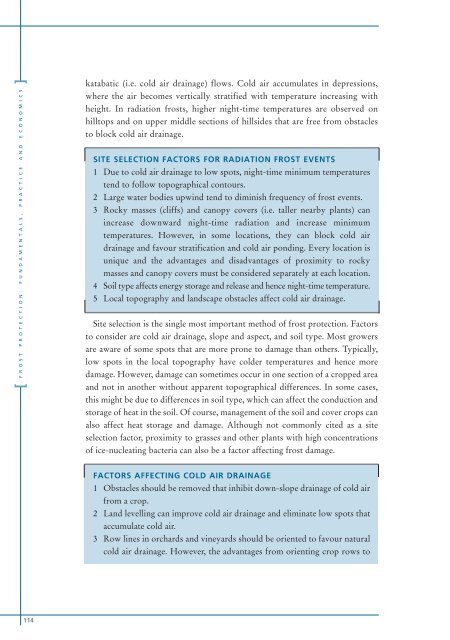
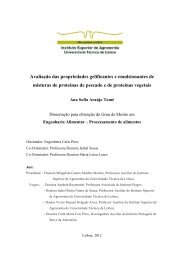
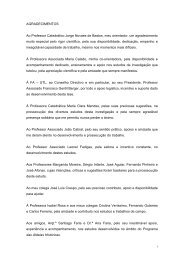
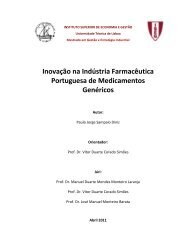
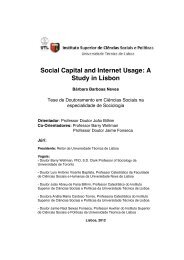
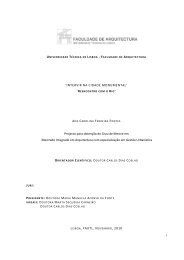
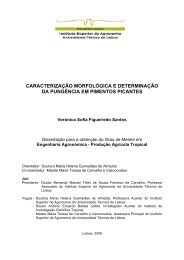

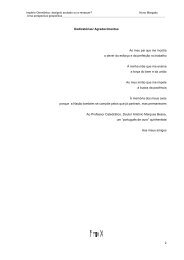
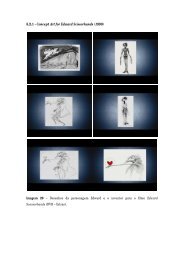
![Tese - Es..[1].pdf - UTL Repository - Universidade Técnica de Lisboa](https://img.yumpu.com/25707135/1/184x260/tese-es1pdf-utl-repository-universidade-taccnica-de-lisboa.jpg?quality=85)


